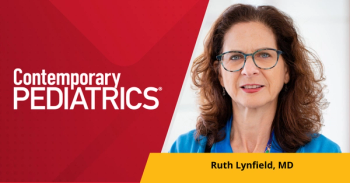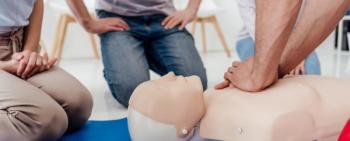Takeaways:
- A study in Neurology suggests that many unexplained sleep-related deaths in toddlers could be linked to seizures, based on audio-visual recordings revealing convulsive events before death.
- More than 2900 children under 4 years die annually from unknown causes, with sleep-related deaths being common and challenging to understand through autopsies.
- The research analyzed videos of sudden deaths in toddlers from the SUDC Registry and Research Collaborative, focusing on the last sleep period of each child.
- Convulsive events, lasting 8 to 50 seconds, were observed in 6 out of 7 cases, with abnormal movements present in all videos.
- The findings suggest that terminal seizures may contribute to many unwitnessed sleep-related deaths in toddlers and potentially in infants, older children, and adults.
According to a study published in Neurology, many unexplained, sleep-related deaths among toddlers could be because of seizures, after audio-visual recordings implied that deaths were related to convulsive seizures.
Study investigators sought to understand the potential mechanisms of death by reviewing videos of sudden deaths in toddlers, as more than 2900 children aged younger than 4 years die from unknown causes on an annual basis.
This accounts for more than 219,000 life years lost annually and most deaths are sleep-related and “unwitnessed with unremarkable autopsies” that limit understanding of death mechanisms.
Limited research is available for sudden unexplained deaths in childhood (SUDCs) for those aged 1 to 18 years, with less than 1% of research publications compared with sudden infant deaths.
The study authors note that sudden unexpected death in epilepsy (SUDEP) risk factors align with sudden deaths in children. Nearly all SUDEP cases recorded on video follow a tonic-clonic seizure “with an early postictal, centrally mediated depression or cessation of respiration followed by cardiac arrest.”
The investigators analyzed terminal videos in a consecutive series of sleep-related child deaths from the SUDC Registry and Research Collaborative (SUDCRRC) to document observations and explore mechanisms of death.
Medicolegal death investigation professionals, parents, or clinicians in the United States, United Kingdom, Canada, Germany, and Australia referred cases. The registry enrolled 301 SUDC cases with complete data collection including forensic pathology biospecimens and death scene, police investigation, autopsy, and toxicology reports.
The study investigators reviewed the first 8 consecutively enrolled cases with video featuring the child’s last sleep period, which were similar to the other 293 (no video recordings) cases regarding clinical history, postmortem findings, and demographics.
One video was excluded because of poor visibility of the child. The remaining 7 videos included 3 girls and 4 boys aged 13 to 27 months. Cases 1 to 5 were in a crib, case 6 was in a converted crib with the side rail removed, and the final case was in a portable crib.
All children had normal developmental milestones and 4 had common pediatric conditions of preterm birth with recent otitis media, chronic otitis media and bilateral myringotomies, egg allergy, and febrile seizures.
Six forensic pathologists, a pediatric epileptologist, and a sleep medicine/epileptologist physician independently reviewed each video. The majority consensus for the 6 forensic pathology reviewers were combined into 1 rater opinion. Percentage agreement was then assessed across 3 raters (1 combined forensic pathology opinion, 1 pediatric epileptologist, and 1 epileptologist/sleep medicine physician).
Of the 7 videos, 5 were continuously recorded and 2 were triggered by motion or sound. Two videos did not feature audio. Each continuous recording included a terminal convulsive event that lasted between 8 and 50 seconds.
After the convulsion, 4 children survived for more than 2.5 minutes. All children had normal cardiac pathology and no known cardiac disease variants were identified using whole-exome sequencing.
Across the 7 videos, the 6 forensic pathologists had a moderate agreement in evaluating convulsive activity (K = 0.641, 95% CI 0.473–0.808, [P < 0.001]). The final 3 raters had 100% agreement on cases 1 to 4, 67% agreement for case 7, and 33% agreement for cases 5 and 6 for the presence of convulsive events.
Abnormal movements were present in 6 videos, and in all 5 continuously recorded videos, “a convulsive event was identified shortly before death… The 2 motion-triggered videos had time gaps: [1] had indeterminant movement and the other had abnormal movements suggesting a convulsive event,” the results stated.
Six children were prone and face down, and 1 had autopsy evidence of airway obstruction.
Overall, a convulsion preceded death in 6 cases. The study authors noted that without video evidence, seizures would not have been implicated in death investigations and that seizure-related deaths are underrecognized in patients with epilepsy and in those without.
Investigators concluded that, “terminal seizures may play a role in many unwitnessed sleep-related deaths in toddlers and potentially in infants, older children, and adults.”
Reference:
Gould L, Reid CA, Rodriguez AJ, Devinsky O, for SUDC Video Working Group. Video analyses of sudden unexplained deaths in toddlers. Neurology. 2024;102(3):e208038. doi:10.1212/WNL.0000000000208038















